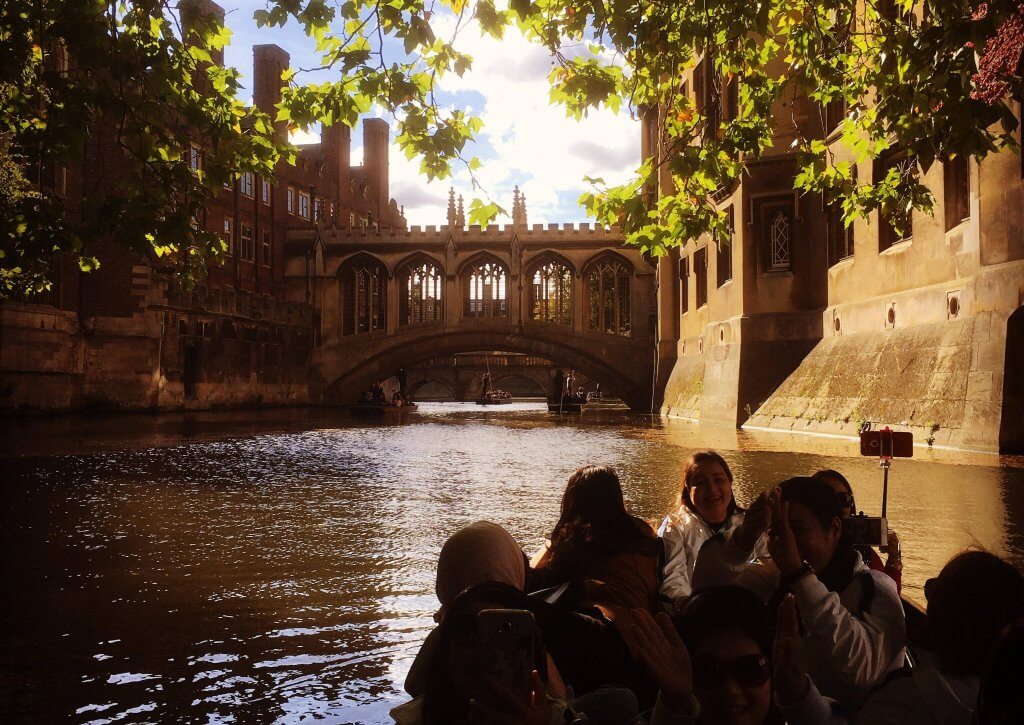
Don’t call it a Gondola, this is punting in Cambridge (though we do both have a Bridge of Sighs!). Leisure punts were first introduced in the U.K in the mid-1800’s and overall have grown in popularity since then. Sometimes used as vehicles to move goods commercially, the industrial revolution has confined it simply to a popular hobby in modern times.
The Punt boat explained
The flat-bottomed craft is not unique to Cambridge, but the city certainly boasts some of the most famous punting worldwide. The boat itself is known as a punt and the action as punting. The term comes from the technique used to propel the craft which is to push the craft off the bottom of the river with a long pole (proper term: quant) and is derived from the Latin term “to push”. This technique differs to Venetian Gondolas who use an oar. The bottom of the River Cam helps us by being more gravel than mud, a difference which is audible when the pole strikes the riverbed as you punt along the Cam.
Once mastered the technique allows one person to move a heavy load on a boat with relatively little energy expenditure and it is for this reason that merchants and farmers used the boats in Cambridge originally to transport goods. A few sights along The River Cam hint at that history including the river level doors at St John’s College and the steps on the old docks, now known as Quayside, where our desk is located. Pop by for a look and to hear more about this old pastime from us at Scholars Punting Cambridge.
